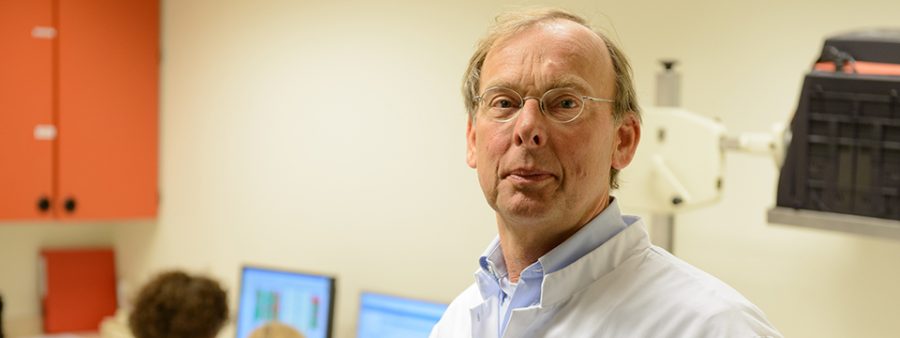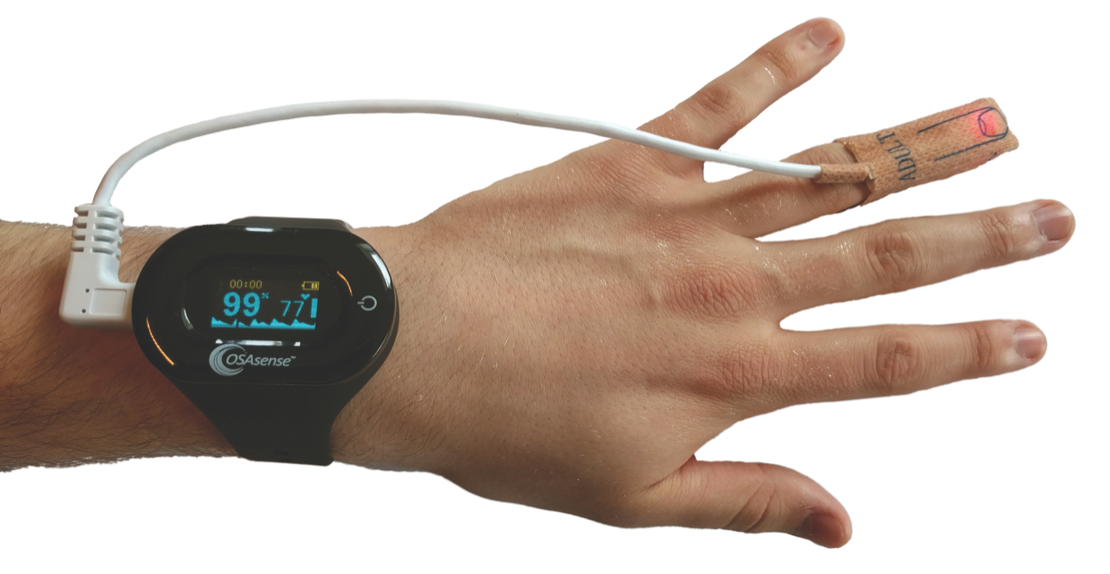Faster, simpler and more patient-friendly diagnosis of sleep apnoea. That is possible thanks to OSAsense: a healthcare innovation that enables patient sleep studies to be conducted at home in a simple manner. Michel Eijsvogel, Pulmonologist at Medisch Spectrum Twente: “OSAsense has reduced the number of (unnecessary) specialist referrals by thirty percent.”
Six to ten percent of adults suffer from sleep apnoea. This syndrome causes breathing to stop regularly during sleep. Oxygen levels in the blood drop and even though the patient does not notice a thing, the body struggles to breathe all night. This affects quality of sleep. The result: snoring, less energy during the day and reduced performance at work.

Quicker diagnosis by the GP
People consult their GPs about these symptoms. Previously, GPs did not have the tools to diagnose sleep apnoea. Patients were therefore soon referred to an ENT specialist, pulmonologist, or neurologist. OSAsense has reduced the number of (unnecessary) specialist referrals. Michiel: “OSAsense is a screening tool consisting of a pulse oximeter, a watch-like device (data storage) and a digital questionnaire. The concept is simple. Patients are given the pulse oximeter and watch to take home for the night and they attach the monitor to a finger while sleeping. The pulse oximeter measures the number of times breathing is interrupted per hour. The pulse oximeter is able to measure this because the blood’s oxygen levels drop during these interruptions in breathing. Patients also complete a digital questionnaire. This information is then combined with the measurements of the pulse oximeter, providing the GP with sufficient information to screen patients for sleep apnoea more reliably.”
Patient-friendly
Insomnia, teeth grinding, or motion sickness: these are just a few examples of possible causes identified by the questionnaire. Thanks to OSAsense, the GP gains a far greater insight into the facts and potential causes and can sometimes even commence treatment as a result. “Does a patient have a mild form or low risk of sleep apnoea and does the questionnaire indicate that the patient is overweight? Then the GP advises the patient to lose weight. The same applies to the consumption of coffee and/or alcohol, or intense exertion before going to sleep. The GP advises lifestyle changes in those cases as well. GPs can take action themselves in respect of these types of relatively minor causes and avoid unnecessary referrals. That makes it very patient-friendly.”

Sleep studies at home
OSAsense is innovative, although Michiel also refers to it as ‘old wine in new bottles’. “Blood oxygen levels were also measured with a pulse oximeter and watch in the past. The greatest benefit to patients at low risk of sleep apnoea is that thanks to OSAsense, there is no need for an extensive, time-consuming and intensive sleep study by a specialist. Patients need not be examined by a team of medical specialists straight away. They need not stay in hospital overnight and be connected to all kinds of sensors. The sleep study simply takes place at home and in many cases, the GP can provide further treatment.”
OSAsense has been in existence for two years and is becoming increasingly well known. That is apparent at the MST outpatient lung clinic. “Six out of ten referrals are made because the GP has identified severe sleep apnoea that cannot be treated with lifestyle changes. We conduct a more detailed examination at the MDT and we treat patients by giving them a specific face mask or mouth guard to wear at night. Since the GP can make more informed referrals, we save a great deal of time and end up with a significantly shorter waiting list. We can therefore examine and treat patients with severe sleep apnoea or those at higher risk of sleep apnoea far quicker.”
Collaboration between UT and MST
OSAsense was developed by Technical Medicine students at the University of Twente in collaboration with specialists at MST. Michiel was involved in this process. “We are pleased with OSAsense. It is wonderful that students conceived this idea, explored the options and then actually developed it. By now, they have used this idea to set up their own business. Thanks in part to the dedication of these students, I think OSAsense has a bright future ahead and that it could achieve worldwide success.”





